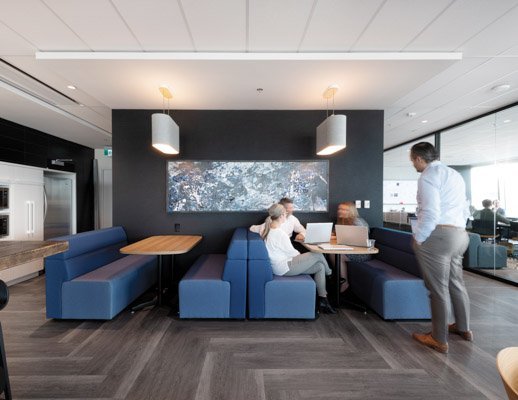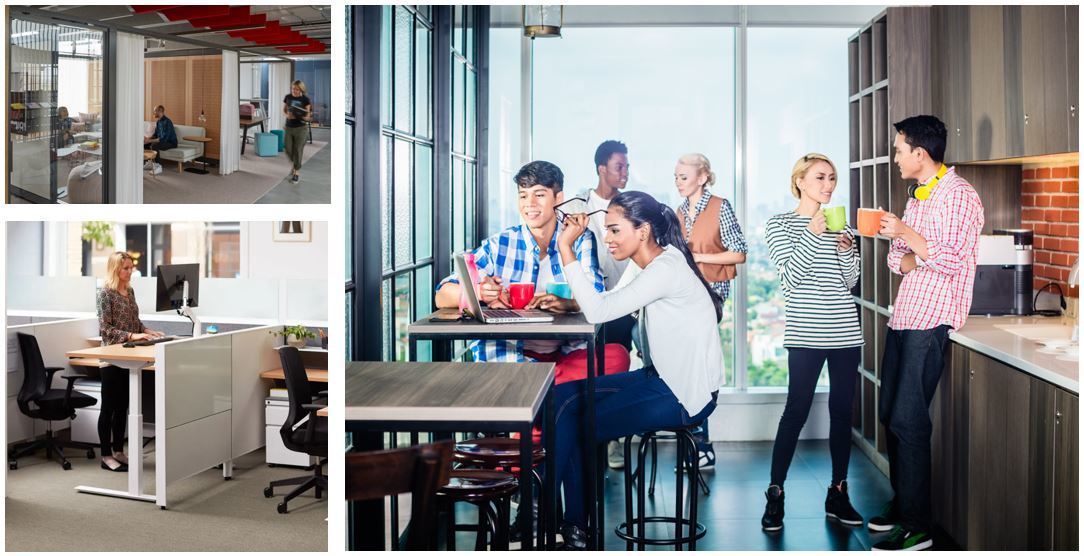17 - Feb - 2022
Collaboration. Community. Concentration.
How The Conforming Workplace Delivers for Employers and Employees Return to Office.
Rather than thinking about the return to the workplace as a confrontation between the goals and desires of employers and employees, organizations can take an approach that is beneficial to the objectives of the organization and their teams.
Redesigning your space to foster Collaboration, Community and Concentration will help organizations and their workforce move past the pandemic and into their next phase. Read more here.
Introduction:
Much has been written about the ongoing tension between employers who want to bring their workforce back into the office and employees and their preference for remote work or a hybrid structure. As the latest wave of COVID-19 cases from the Omicron variant steadily declines, many companies and organizations are rekindling their Return to Office planning.
Every company or institution will contend with what is best for their organizations, their employees and their customers. There is no one-size-fits-all solution. For some, they’ll bring all of their employees back to the workplace full-time. Others will remain fully remote. And many will provide some form of hybrid or flex scheduling in an effort to find a middle ground.
The demands on workplace design, furnishing and workplace technologies will have to shift to meet new sets of expectations and requirements. At CI Select, as we meet with and counsel many of our clients and partners, it is our view that there are three critical imperatives to meet the goals and objectives of the Return to Office for both employers and employees.
The balance of this paper will address those three goals that are shared by employers and their teams: Collaboration. Community. Concentration.
Collaboration:
Strategy, innovation, and creativity are the lifeblood for organizations. As the saying goes, if you aren’t moving forward, you’re falling behind. After two years of scratching and clawing to maintain operations and continue delivering for customers, many organizations have found these critical attributes for sustained success have been hampered or slowed.

Having teams in the workplace to collaborate with one another is essential to reigniting short-, medium- and longer-term strategic plans, product, service and customer experience innovations and the creativity to bring them to life. Whether it’s working in-person with teams or supervisors getting to have face time with the employees they’re responsible for managing, it all benefits from being able to work together in the same space and look each other in the eye and observe body language in a meeting or one-on-one conversation.
Meanwhile, employees long ago became exhausted with the litany of Zoom calls. They grew self-conscious about their work-from-home appearance and letting their work colleagues into their homes in such an intrusive manner. Interactions with their colleagues had to be scheduled rather than allowing them to happen organically. And many felt they were more living at work than working from home.
As a result, both employees and employers will be seeking spaces within their workplaces where they can collaborate in-person with their teams. Whether it occurs in smaller huddle rooms or larger conference rooms and training rooms, the space design, furnishing and technology of these types of spaces can inspire employees’ exchange of ideas that will fuel innovation and perpetuate the continued success of the organization.

Community:
All of us have felt the impacts of social isolation throughout the past two years. At its most extreme, we experienced lockdowns except for essential activities. For much of the time, restrictions weren’t quite that extreme, but they still caused reduced social interaction. Closed fitness centers, curbside carryout instead of in-restaurant dining with friends and family, scaled back gatherings to accommodate social distancing, and limited options for leisure activities, the list is long.
Within the workplace, numerous studies show that one of the things people miss most while working from home is the camaraderie with their co-workers. The social side of the workplace is an essential component for employees to look forward to leaving the comforts of their homes, getting dressed in work attire and making the commute into the office.
Prior to the pandemic, organizations invested great resources—time, energy, and budget—to fostering a distinctive company culture to enable them to attract and retain top talent. They made investments to forge employee engagement so employees would align with and share the vision for the direction of the organization, helping them to make the greatest impact and to perform at their highest levels.
There is a robust amount of data that has been collected during the pandemic that shows employees who are working from home all or most of the time are less engaged and more likely to seek new employment elsewhere.
Creating spaces within the workplace where your people will experience the similar comforts to home while fostering a fun and social environment can help overcome some of the obstacles of motivating employees to return to the office while reigniting company culture and employee engagement.

Concentration:
Consistently one of the most positive findings sited about working from home was the ability to get more work done without interruptions. As much as employers and employees recognized the adverse impacts remote work had on collaboration, the opposite is true for more task-oriented work.
For employees to be able to go to their home office or works space within their homes and tick off the tasks on their to-do list, they felt a sense of increased productivity due to fewer interruptions throughout their workday.
When they come back to the office, whether it’s full-time or several days of the week, in between meetings, they’ll seek the same privacy and ability to concentrate in order to maintain the levels of productivity and efficiency with which they’ve come to expect.
At a point in time where the labor pool is tight and finding top talent is hard to come by, helping your employees continue at the highest levels of productivity is more imperative than ever before.
From workstations to pods to acoustical products such as sound masking, effectively designing the workplace space with furniture, technology and acoustical products can give employees the ideal environment to be able to focus and continue getting their work done with the same degree of efficiency they’ve enjoyed when working from home.

Summary:
Whenever your organization decides to shift from planning the Return to Office to implementing it, it is certain to come with a mix of enthusiasm and transitional angst. There’s bound to be some tension or friction between employees and management based on whatever decisions and policies are put in place.
But there are also opportunities to find common ground where employees and employers both stand to benefit. Evaluating the design and layout of your workplace and choosing the ideal furniture and technologies that facilitate collaboration, community and concentration can prove to be a significant accelerant to meeting the goals of both employees and employers.
At CI Select, we call this The Conforming Workplace. A workplace that adapts to the ever-changing needs of the organization. A workplace that works the way your employees want it to at that moment. A workplace that fosters productivity, teamwork and camaraderie. A workplace that delivers Collaboration, Community and Concentration.
To find out more about how The Conforming Workplace can help you prepare your return to the office, please contact Dan Tramelli at 314.686.6976 or dtramelli@ciselect.com.
Previous Article
Eight Things to Know When Choosing a Furniture Dealer
Read ArticleNext Article
